
I’m sure you’ve seen poorly-applied hooks, eyes and snaps on garments that are otherwise beautifully sewn – and I always think, what a shame! Not only are they not so nice to look at, they quickly work themselves loose (the metal saws through the thread), and they end up hanging there, partially sewn on and not particularly useful.
You can easily put into practice what couture does best – combine form with function – and sew them on securely and beautifully.
To attach them, I use a simple variation of the stitch you normally use. It’s actually a half-hitch, and it’s one of a series of what I think of as locking stitches. And, best of all, it’s easy and fun to do.
Begin by coating your thread with beeswax (run it through the beeswax a couple of times). But that’s not quite enough – you’ll need to melt the beeswax into the thread (using your iron) to finish the process and really strengthen the thread. If you don’t, all the beeswax will come off on the first few stitches, and the thread won’t be as pliable or as strong as it can be; plus, it’ll be sticky from the beeswax, and difficult to work with. You can use a paper towel to protect your ironing surface when you press the beeswax into the thread, but I usually don’t bother – I just use the far end of the ironing board.
The snap is covered, and the doubled thread has been prepared.
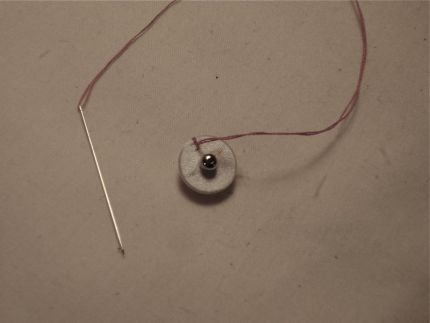
To attach a snap: begin stitching as you normally would.
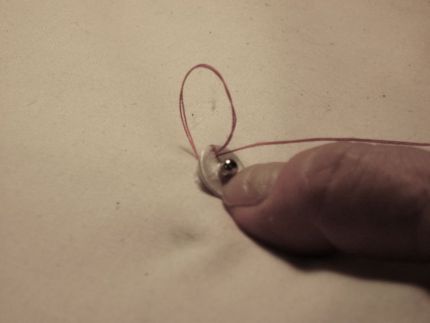
Just before you pull the thread tight, put the needle back into the loop, sort of spearing it, going up from the bottom.


Then pull the thread tight, and work the thread…
Start your 14-day FREE trial to access this story.
Start your FREE trial today and get instant access to this article plus access to all Threads Insider content.
Start Your Free TrialAlready an Insider? Log in



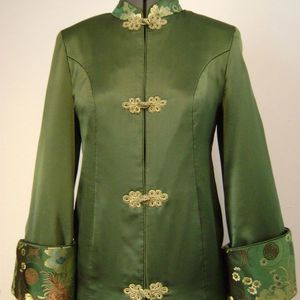

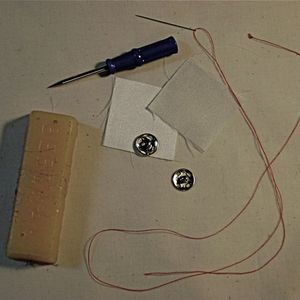
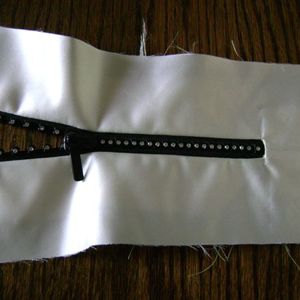
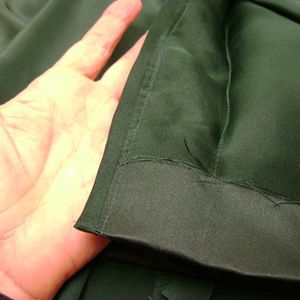


























Very slick - I usually pay someone to sew these things and
buttons on but no more - I will give it a try. It looks
just like embroidery and i like that.
I remember learning this a long time ago in Home Ec class, but had forgotten how pretty and yet practical it is. I will remember it the next time I do a snap or hook. I wish I had remembered it two months ago when I put hooks on the train of my new daughter-in-laws wedding dress!
Very attractive.It's worth the little effort this technique takes to attractively finish a garment you've spent some time on.
I remember (now too) using this nice technique. I became lazy and--- sloppy. Consider this a turning of a new leaf.
But where and how do you tie off.
Thank you for taking this technique to the next step for your readers. I was sorry it was not done on the last entry about covering snaps. I use this buttonhole stitch for so many finishing hand details, that I don't even think of doing it the standard "fast" way.
What's worth doing, is worth doing well!
Thanks for the tip about melting the beeswax. I had tried a commercial thread coating but it is too easily lost. A bar of beeswax, however, isn't. Cordially, Nehmah
I hate snaps. I hate putting snaps on. Now I know why. With this method they will function like they are supposed to and I won't be resewing them all the time. Thank you so much!
Sooo worth the extra minute to do it the right way. Kenneth King's books have made me love hand sewing again. I recently re-read Susan Khalje's Bridal Couture book and I got the same sense of appreciation of hand work.
Do you cut the thread after each knot or just keep going?
This is the only thing I remember from sewing class in Home Ec in school. I've always used it for just about everything and now I know why. Thanks for the tip about the beeswax as it is definitely worth the effort!
Thanks for posting this. I try to make my garmets look as good on the inside as the outside. I never did have a good way for the snaps and hooks. That's why we sew, for exceptional quality.
Wow! I have always wondered how to sew snaps and hook/eyes with a more attractive stitch. Not only does it look fabulous but it is far better than anything I have ever tried. Additionally, I have wondered about the best way to use beeswax. I have tons of it (my husband is a beekeeper) and use it with stringing beads & candle making. Because it is so sticky I have shyed away from using it with sewing. As usual your ideas and tips are marvelous for me. I am a dress designer and I will no longer doubt that my snaps etc. won't look bad or become loose.
I can't wait to try this technique. I tried to buttonhole around the edges of hooks but it always looked messy. Now I know why. will have to buy some beeswax though.
Beautifully executed! If ever you are stuck without beeswax and have to sew a metal button or snap that keeps on falling off, you can use dental floss. Mind you, the result will not be as elegant.
Beautiful. Candle wax works well if you don't have beeswax. Run thread over a candle. Be careful about the color, though.
Love the use of a decorative stitch to secure snaps and/or hooks 'n' eyes. Like the Hong Kong seam finish, it adds so much to the finished garment. Not to mention securing a small closure without looking tacky.
Dental floss? Good stuff, this. Used it to secure some great looking crystal buttons with a metal shank to a light-weight metallic fabric. Backed each shank button with a tiny, flat, pearl-type button to ensure (sleazy) metallic fabric would not rip and/or shred. Stitching lasted over 30 years until the day I finally dumped the blouse, but not before I cut off all 12 of those marvelous crystal buttons.
Very nice. I've seen this method before, but the discussion here and photos make is especially clear.
Thank you Susan for this informative article. We can always count on you for clearly written and illustrated articles about fine sewing techniques. Perhaps to accompany this tutorial next you will instruct us on how to neatly cover the snaps. Always welcoming your instructive articles.
Looks great and sounds terrific. Will use this technique the next time I use snaps or hooks.
I was taught this method by my grandmother who had the most beautiful stitches, evenly spaced and perfect tension. She spent many hours with me watching her do handwork. This method is the one that stuck the best of all she taught me. If I ever put a hook and eye on the lazy way I think of her cut it off and do it her way.
One question is there an easy way to cover snaps? The small size makes covering them a bit of a challenge.
Ooops! Susan you are one step ahead of me. After reading this article I looked through the Threads site using your name and what to my 'wandering eyes did I see?' The answer is your November 1st, 2010 post about 'How to Cover Snaps.' Thanks for this article as well.
i have learned years ago to sew them properly in my my sewing products, but i like the colours you used to show it to use.
i think it's soooo pretty that it must be on the outside , what a great inspiration idea you have given me. thank you!!!!
love it;-D
I need to learn this... Thanks!
Here's the link to Susan's recent post on covering snaps: https://www.threadsmagazine.com/item/16428/how-to-cover-snaps
I have tremors in my hands, which makes it difficult to manipulate small objects and hold them in place. I would love to be able to accomplish these finishing techniques. Does anyone have advice on how to keep these tiny findings in place while you sew it, without the object that is holding it in place getting in the way and making the sewing more difficult?
JaniceK writes writes that she has tremors in my hands and can't hold the small items on the cloth to sew them. My suggestion is to tape them on with scotch tape to hold them in place for sewing. I do that all the time for buttons and all. Works great and comes off easily when finished with the sewing.
Fantastic - thank you! Now that I know the proper method, no more messy notion applications for me. One request to Susan or Threads online editors: better use and navigation of the site would occur if you provided a link to the related snap covering article, say at the word "covered" in the sentence before the first photo.
I really like what I read. I won't hate sewing on snaps and hooks anymore.
WOW...Thank you for a wonderful method of doing my least favorite sewing have-tos! Now I won't mind those snaps and hooks and eyes so much. Mine have always been the old-style, sloppy, likely-to-break thread applications. As an old sailor, the half-hitch methold sounds great. Can't wait to try it.
Unfortunately when I printed it for future reference it was 6 pages! Perhaps THREADS could add an option to print in a reasonable size like other sites do.
I'm sorry. I'm not quite understanding. Do you go through the loop twice? It doesn't seem like going through once is going to make a knot. Unless you start the next stitch to the right of the first one?
This is a beautiful technique. I literally frowned at the last hook and eye that I sewed on because it was so ugly. I'd love to resew it with this technique.
This procedure not only assures stability with your snaps, you could actually attach snaps in this fashion as an accessory as it looks very attractive. Thank you.
Jetmuis - The contrast thread is awesome on these projects. A lot of fashion brands are paying closer attention to details like this even on the inside of the garment. It's a great little surprise when you look inside of clothing to realize they thought to make the overlock a contrast color. This is seen a lot in denim.
Back in the 50's this is how you made hand made button holes. This way you could make buttonholes if you did not have a buttonhole maker.
Was a picture added? Rereading the article, the second hook picture clarified the technique for me. Perhaps I just needed to read again with fresh eyes. Can't wait to try it.
Thank you, Susan and Threads! Love your magazine!
Thank you. Much nicer than the way I sew snaps and hooks on. I will try this next time.